This page is optimized for smartphone display in Landscape Mode
What is wrong with the Aleph and B (Sinaiticus and Vaticanus) Greek Texts of the Bible?
Haga clic aquí para leer este estudio en español
The answer to this question is simple: the Golden Ratio pattern of UCC-OO, (or, one unique, two complements, and two opposites), found on every page of the Bible on 8 different levels, is integral to the Divine
design for the Holy Bible.
See the detailed explanation of the Golden Ratio Format of the Bible
here.
There are two particular portions of the Bible that are in question: Mark 16:9-20 and John 8:1-11 (in the Traditional Chapter and Verse numbering), although critics of the Aleph
(the Sinaiticus) and B (Vaticanus) Greek texts, have pointed out for many years that fact that there are literally thousands of words and phrases that exist in the Received Text, but are missing
from the Critical Texts.
Supporters of the Critical texts claim that the Received Text is "inflated", meaning that text editors in the distant past added those words and phrases to the Received Text manuscripts
in an effort to add support in the Bible to the Orthodox Christian doctrines of the Trinity, the Deity of Christ, and so on. The idea is that the Received Text has words, phrases, and even whole
passages, such as Mark 16:9-20 and John 8:1-11 that are "spurious"; and therefore they should not be part of the Bible versions that we Christians read. In accordance with this, versions such
as the New International Version (NIV) have either removed the passage completely or put a very conspicuous note in the margins that this passage is not found in the "best" manuscripts (mss).
The view that the Aleph and B texts are the "best manuscripts" vs. the Received Text that supports translations such as the KJV, the KBV, and other Reformation-era versions is
widespread, although not universal. Supporters of the Received Text group of Greek manuscripts (sometimes called the Byzantine text) are much fewer because of the heavy preponderance of professors
in Christian colleges and Seminaries who will teach only one side of the issue, the pro-Critical text view. I have personally talked about this issue with some Seminary students at an area Seminary,
and they knew almost nothing about the Received Text issue. As far as their professors were concerned, the Received Text was not welcome in their school.
This is very unfortunate, because as I will demonstrate, the Aleph and B manuscripts have been completely discredited by the Golden Ratio format of the Bible.
Mark 16:9-20 with its context
Now here is the proof that the Critical Texts are fatally flawed: here is the Gospel of Mark, Chapter 2.5 in its entirety. (If you are using a smartphone, please turn to landscape orientation for the best view).
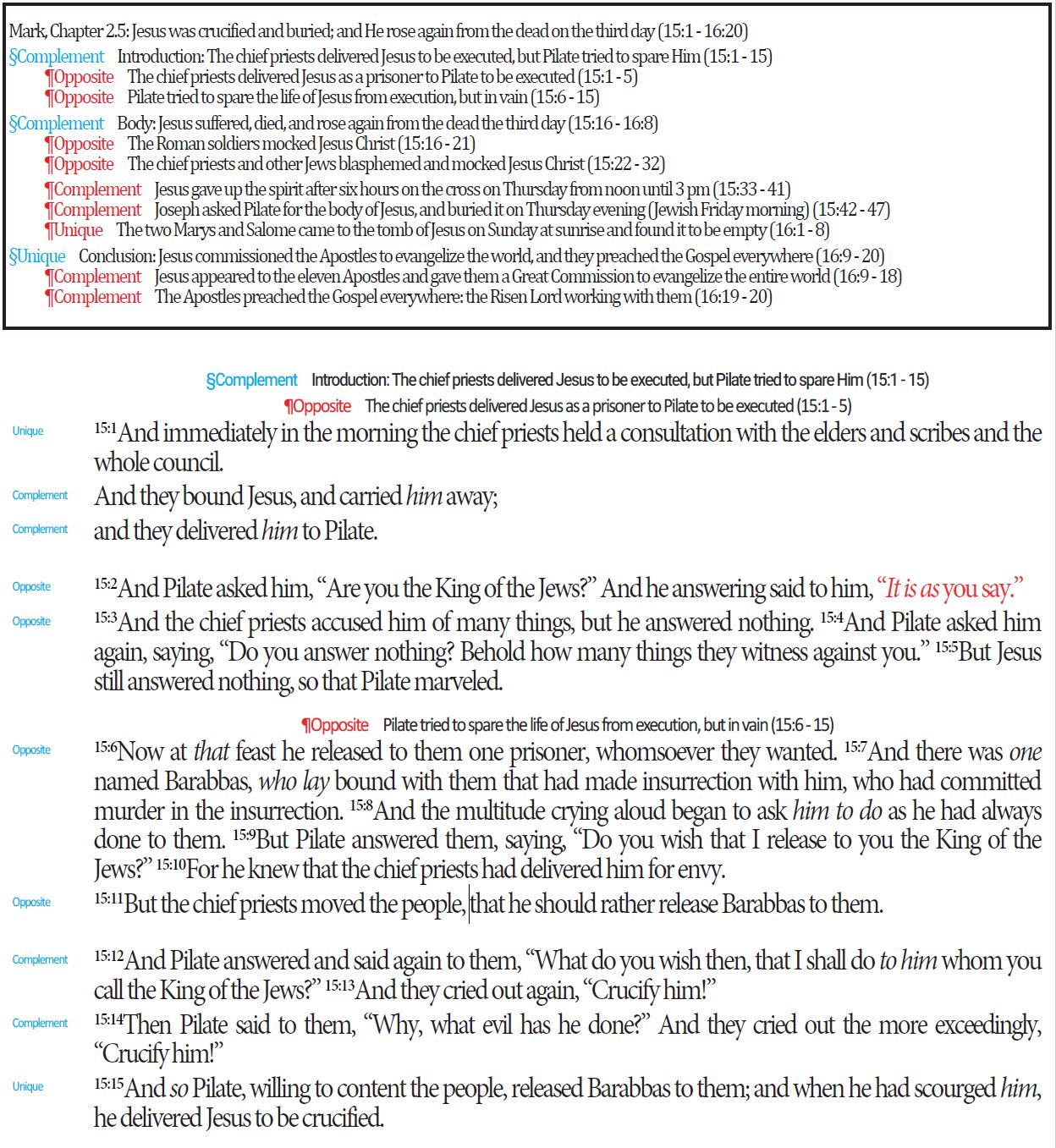
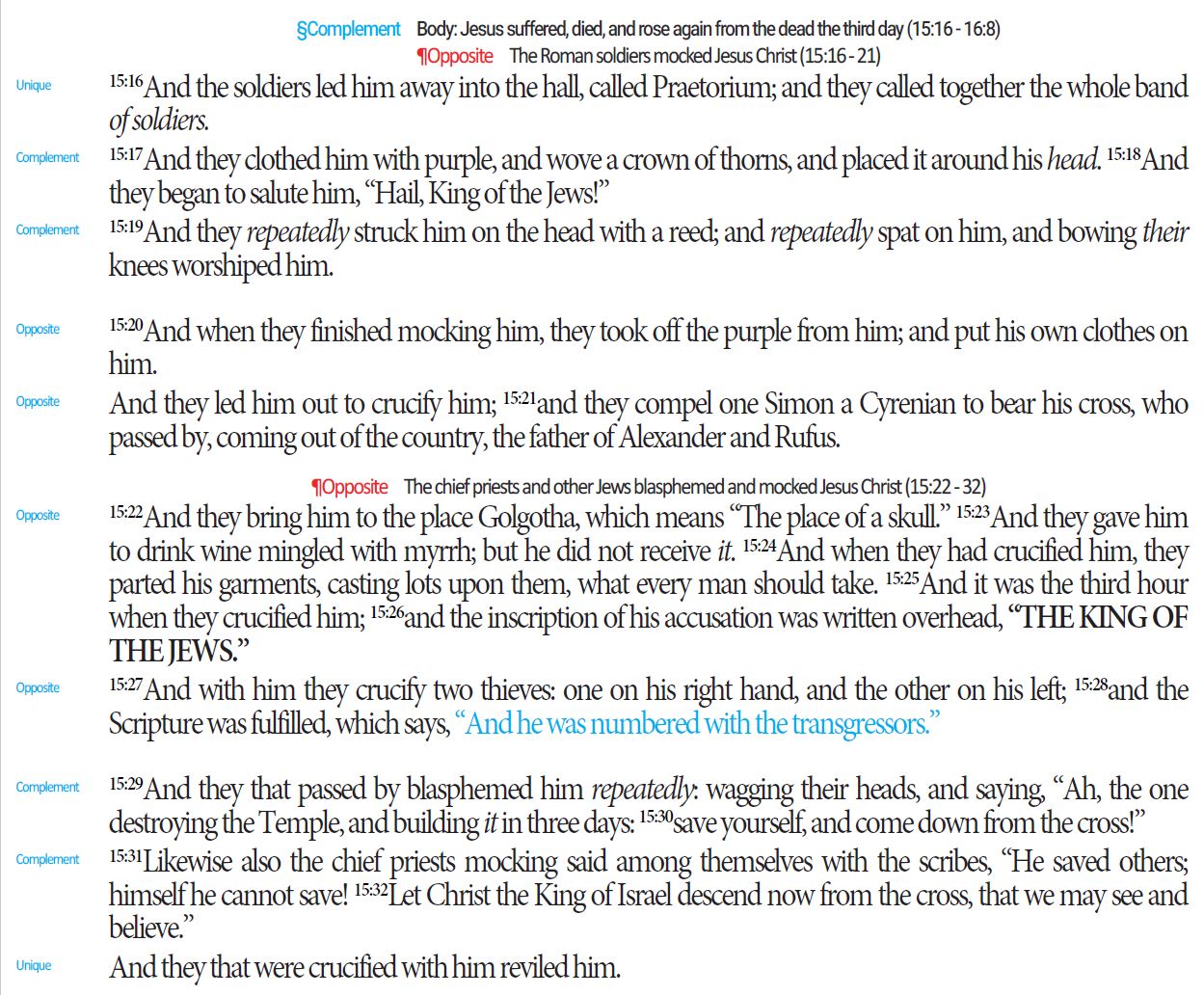
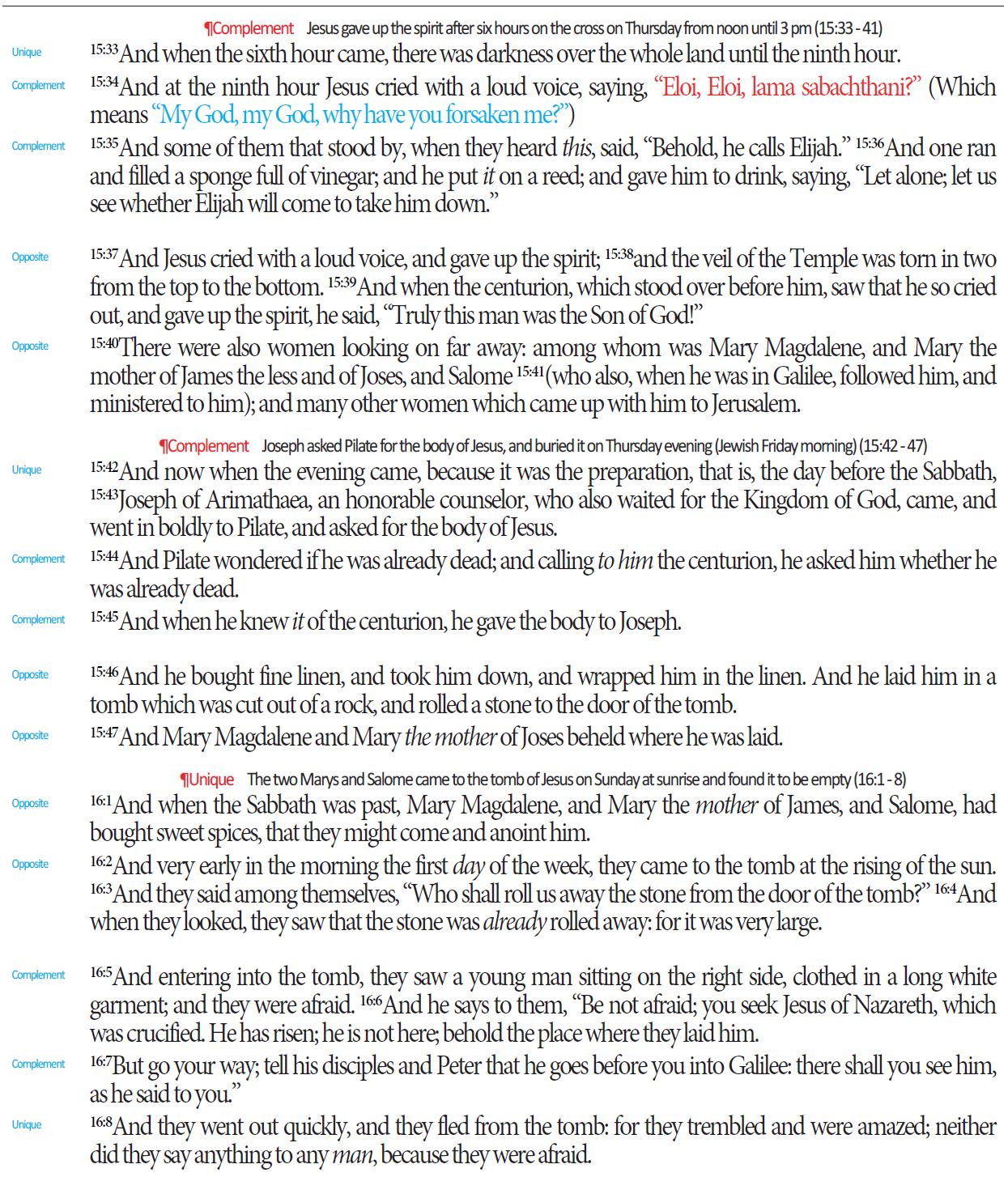
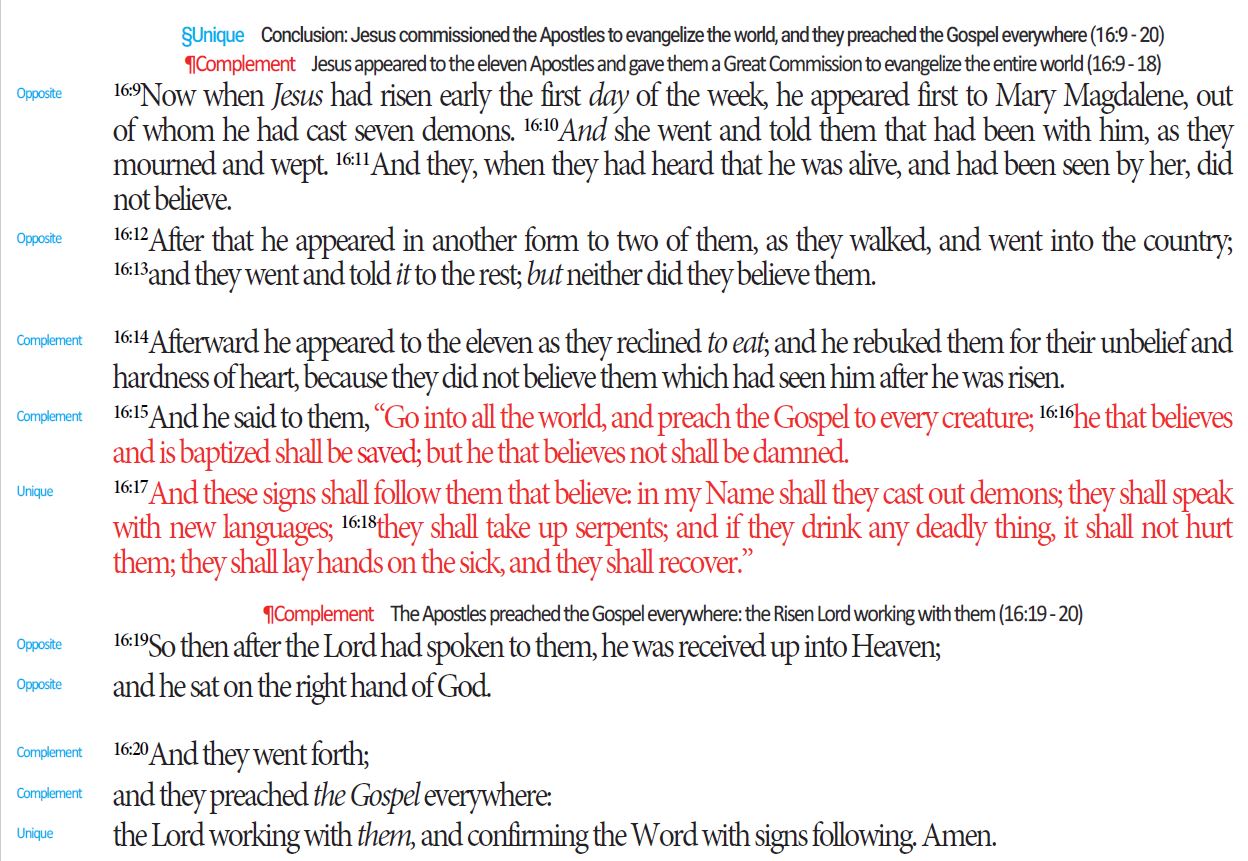
Isn't it interesting that the entire portion of the text in question (16:9-20) is the Conclusion of this Chapter? The previous Chapter was the events of the Last Supper up
through the Jewish Kangaroo court against Jesus and Peter's denials. This Chapter includes all of the events afterward, including the crucifixion, burial, and the resurrection of Jesus; so it
is a complete unit (or chapter). The format of this Chapter conclusively proves that the text omitted by Aleph and B is genuine Scripture, and that Aleph and B were edited to remove this important Scripture. The Received Text includes
this text, so it is the true text.
John 8:1-11 with its context
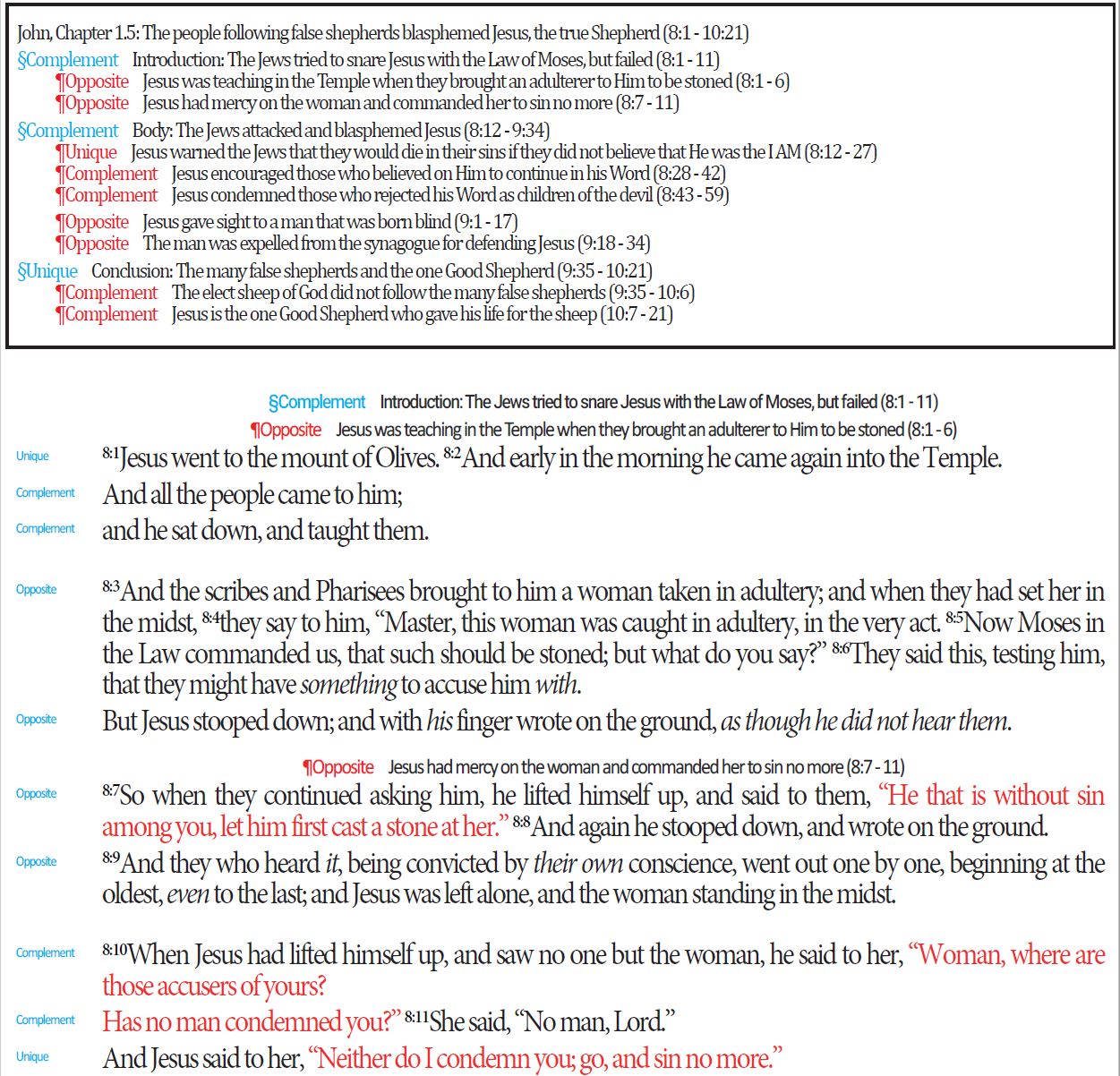
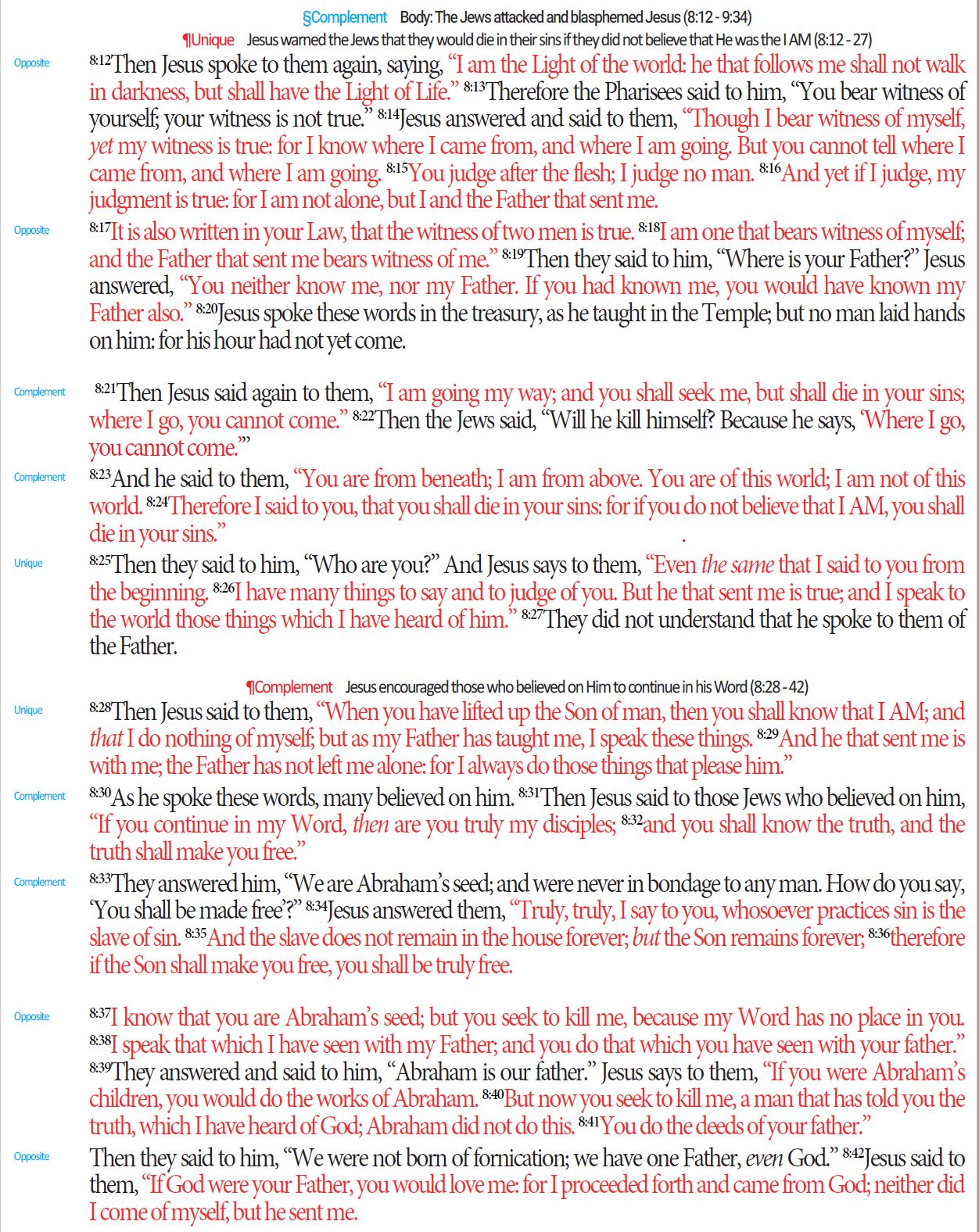
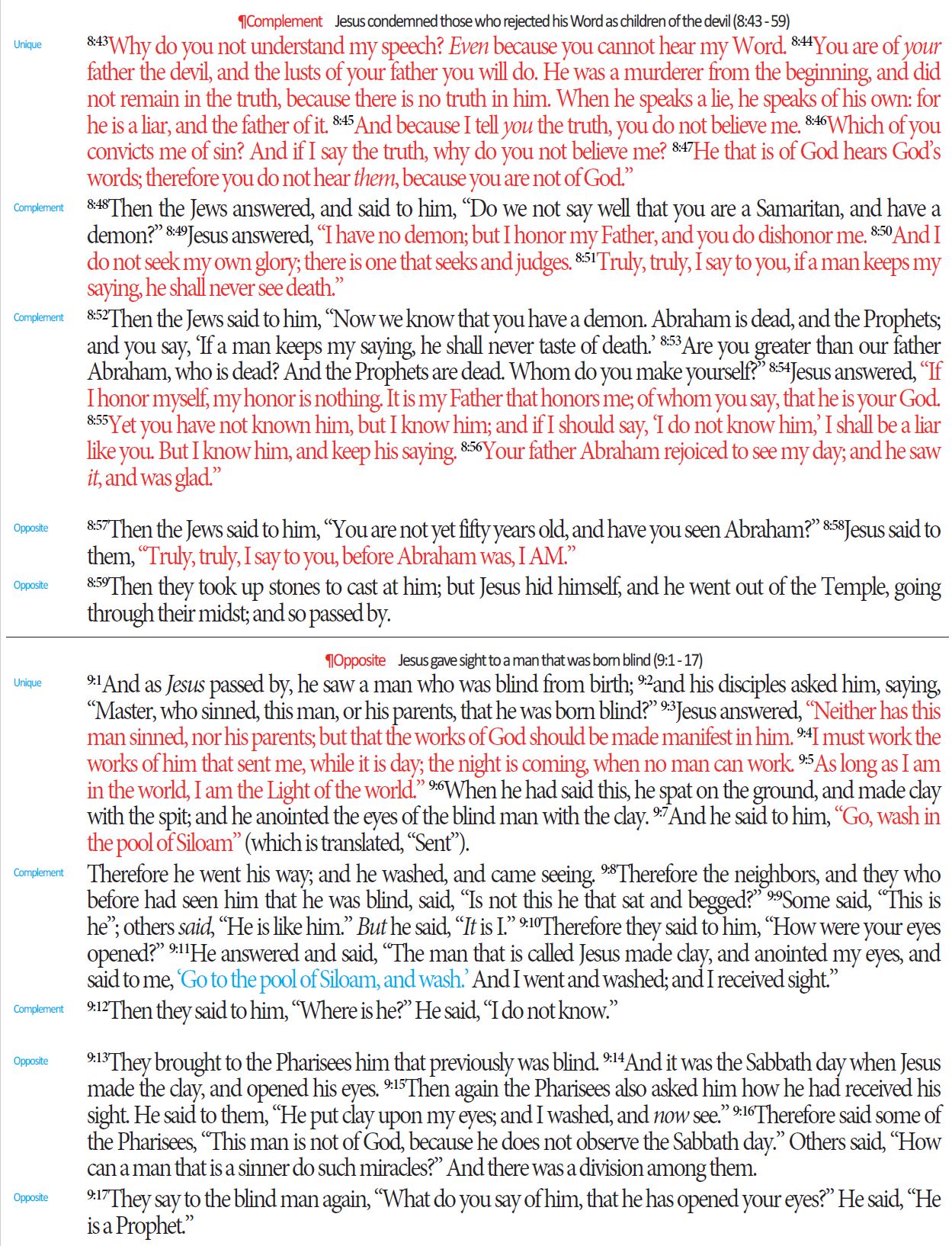

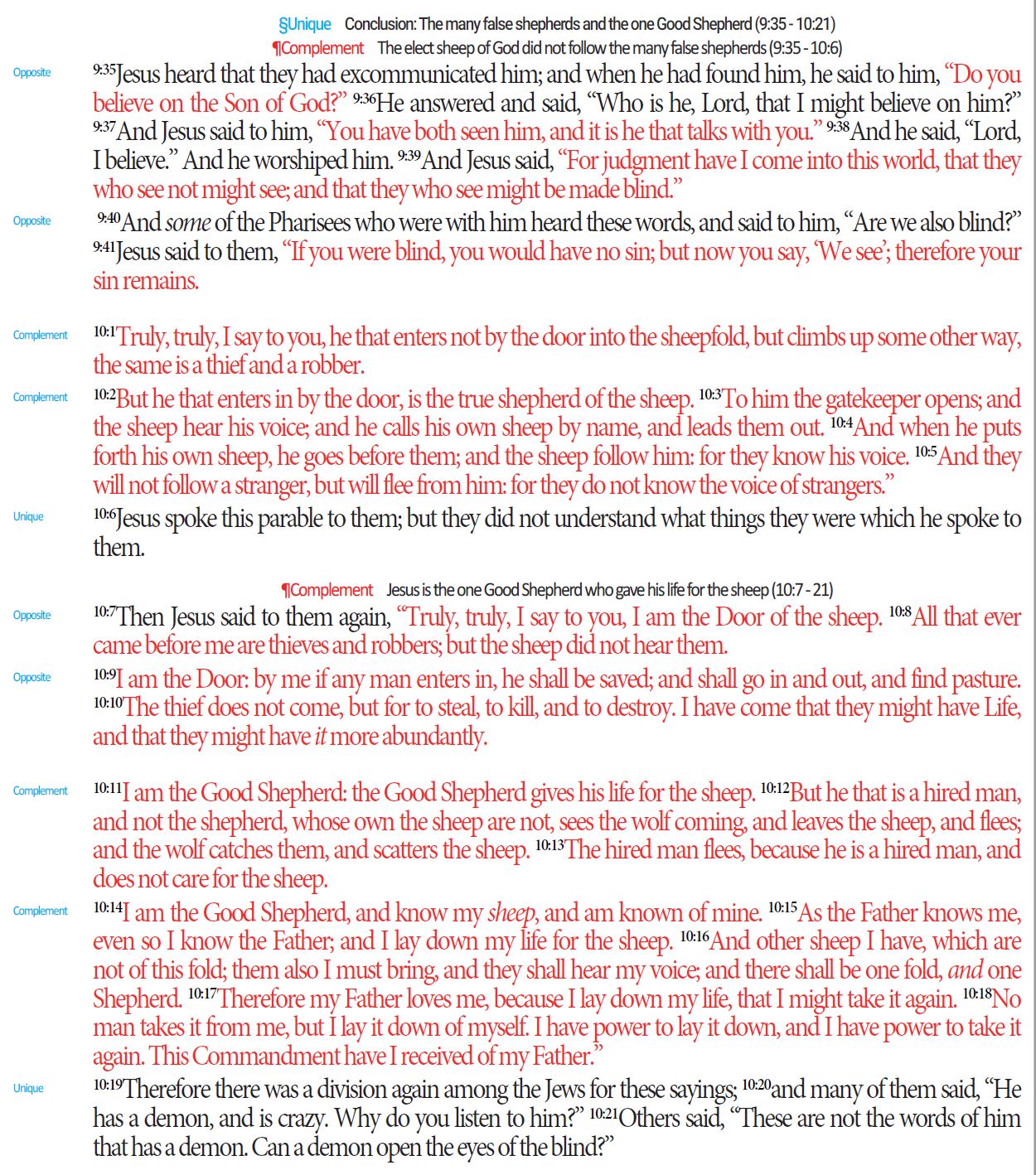
The events of the entire Chapter happened on the same day, so the text in Chapter 1.5 has complete integrity and consistency in their themes, and it constitutes a complete chapter.


Now let's look more closely at the Table of Contents for these two chapters. Notice that both of these chapters in the Golden Ratio design of the Bible have the same pattern of Introduction-Body-Conclusion.
This is not unusual; in fact, the Golden Ratio design of the Bible is characterized by this same Introduction-Body-Conclusion design. So if a chapter did NOT have either and introduction or a conclusion, then that would be a red flag to me that something
is wrong!
If these texts are removed according to Aleph and B, then you have a big problem: where is the introduction to John Chapter 1.5 and the conclusion to Mark 2.5?
On the other hand, since the Aleph and B manuscripts omit John 8:1-11 and Mark 16:9-20, this omission on their part speaks loudly that someone (motivated by the devil) decided to remove these two texts of Scripture from these manuscripts!
This was a wicked thing to do, and I believe that God judged whoever did it with his wrath! Never touch the Word of God with the intent to change it or do it harm, or you will receive the wrath of God.
Literally, the Golden Ratio design of the Bible does not work with the Aleph and B manuscripts! But if you use the Received Text (Scrivener), there is no problem at all. I believe that this is proof that the Aleph and B manuscripts are corrupt and unworthy for
use in any Bible translation.
So if Aleph (Sinaiticus) and B (Vaticanus) have these 2 major errors in their text that I have just demonstrated, why is it not conceivable that it also contains numerous other
textual manipulations, alterations, and/or deletions? In fact, the original manuscript of Sinaiticus shows exactly that, with clear evidence that text has been removed, erased, changed, etc.
For those of you who trained for the ministry in a Bible College that claimed that Aleph and B are the "best", how can the claims of your professors be true? Clearly, your professors
taught you something that they doubtless believed to be true, but it was not true.
This is why I can never accept the Sinaiticus and Vaticanus (Aleph and B) texts as reliable witnesses of the Original writings of the Apostles. Not now, not ever. And neither
should you. Get a copy of "The Holy Bible in the Original Languages" published by the Trinitarian Bible Society, if you have formal training in Greek. This edition uses the Scrivener Received
Text and the Hebrew Massoretic text. In all my years of working with the Bible, I've never seen any evidence whatsoever to call into question one iota or one tittle of this text.
God's people
everywhere should reject Aleph and B and all of their corrupt offspring: Wescott-Hort, Nestle-Aland, UBS, and a number of others; along with any Bible version that was based on them. Amen.
Esta página está optimizada para la visualización de teléfonos inteligentes
Estudios de especiales tópicos bíblicos
Si está utilizando un teléfono inteligente, colóquelo en modo horizontal para ver mejor el texto.
¿Qué hay de malo en los textos griegos de la Biblia Aleph y B (Sinaiticus y Vaticanus)?
La respuesta a esta pregunta es simple: El patrón de Proporción Áurea de "UCC-OO" (o uno único, dos complementarios y dos opuestos), que se encuentra en cada página de la Biblia en 8 niveles diferentes, es integral para el diseño Divino de la Santa Biblia.
Vea la explicación detallada del Formato de Proporción Áurea de la Biblia aquí.
Hay dos porciones particulares de la Biblia que están en discusión aquí: Marcos 16:9-20 y Juan 8:1-11 (en la numeración del sistema Tradicional de Capítulos y Versos), aunque los críticos de los textos griegos Aleph (el Sinaítico) y B (el Vaticano) han señalado durante muchos años el hecho de que hay literalmente miles de palabras y frases que existen en el Texto Recibido, pero que faltan en los Textos Críticos.
Los partidarios de los textos críticos afirman que el Texto recibido está "inflado", lo que significa que los editores de texto en el pasado lejano agregaron esas palabras y frases a los manuscritos
del Texto recibido en un esfuerzo por agregar apoyo en la Biblia a las doctrinas cristianas ortodoxas de la Trinidad, la Deidad de Cristo, etc. La idea es que el Texto Recibido tenga palabras, frases e
incluso pasajes completos, como Marcos 16:9-20 y Juan 8:1-11, que sean "espurios"; y por lo tanto no deberían ser parte de las versiones de la Biblia que leemos los cristianos. De acuerdo con esto,
versiones como la Nueva Versión Internacional (NVI) han eliminado el pasaje por completo o han puesto una nota muy llamativa en los márgenes de que este pasaje no se encuentra en los "mejores" manuscritos
(mss).
La opinión de que los textos Aleph y B son los "mejores manuscritos" frente al texto recibido que respalda traducciones como la KJV, la KBV y otras versiones de la era de la Reforma está muy
extendida, aunque no es universal. Los partidarios del grupo de manuscritos griegos del Texto Recibido (a veces llamado texto bizantino) son mucho menos debido a la gran preponderancia de profesores en las universidades y seminarios cristianos que enseñarán sólo un lado del tema que favorece el texto crítico. Personalmente he hablado sobre este tema con algunos estudiantes de Seminario en el conocido Seminario "Bautista Fundamental", y ellos no sabían casi nada sobre el tema del Texto Recibido. En lo que respecta a sus profesores, el Texto Recibido no fue bienvenido en la escuela de ellos.
Esto es muy desafortunado, porque como demostraré, los manuscritos Aleph y B han sido completamente desacreditados por el diseño de la Proporción Áurea de la Biblia.
Marcos 16:9-20 con su contexto
Ahora aquí está la prueba de que los Textos Críticos tienen errores fatales: aquí está el Evangelio de Marcos, Capítulo 2.5 en su totalidad. (Si está utilizando un teléfono inteligente, cambie a la orientación horizontal para obtener la mejor vista.).
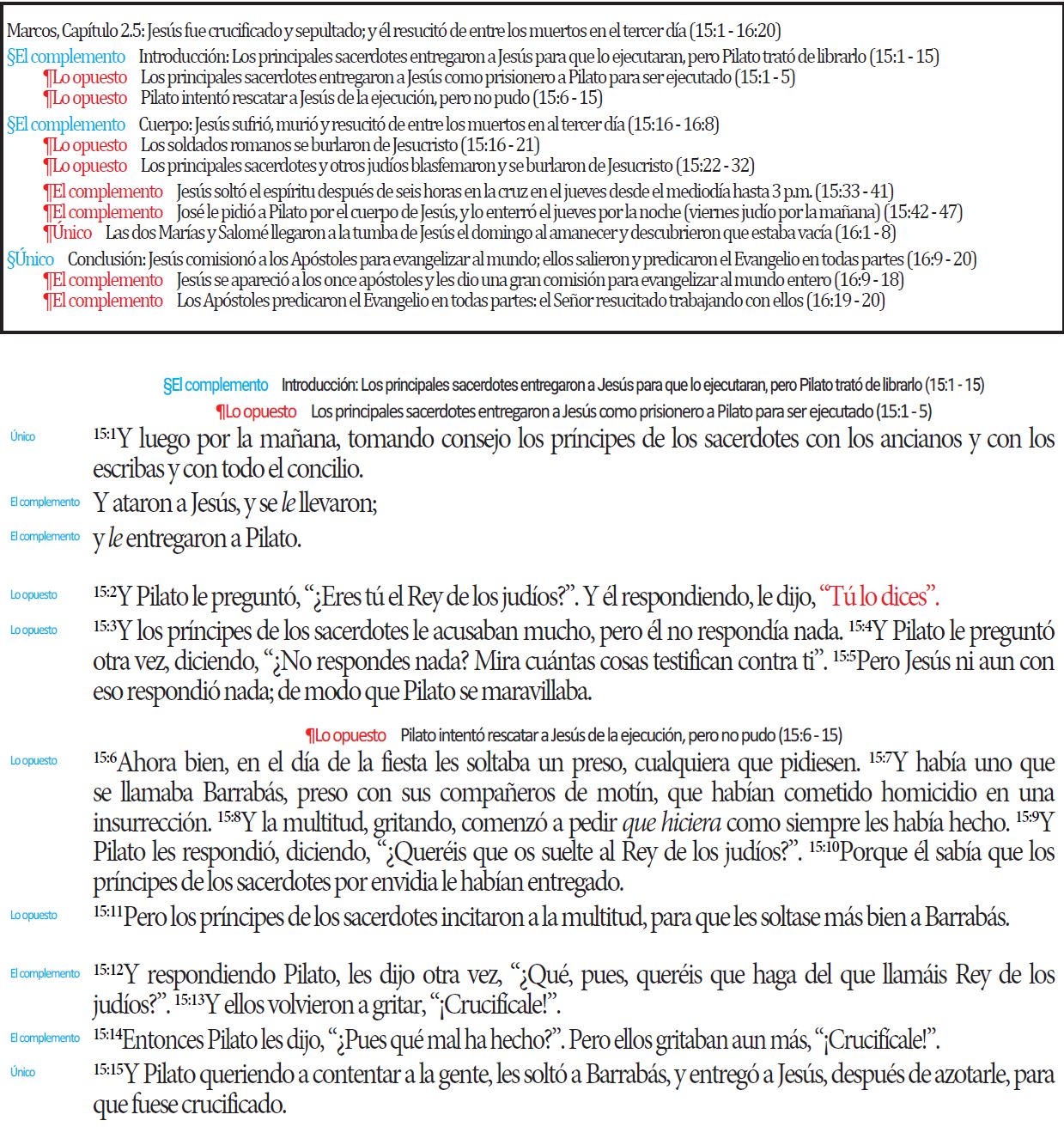
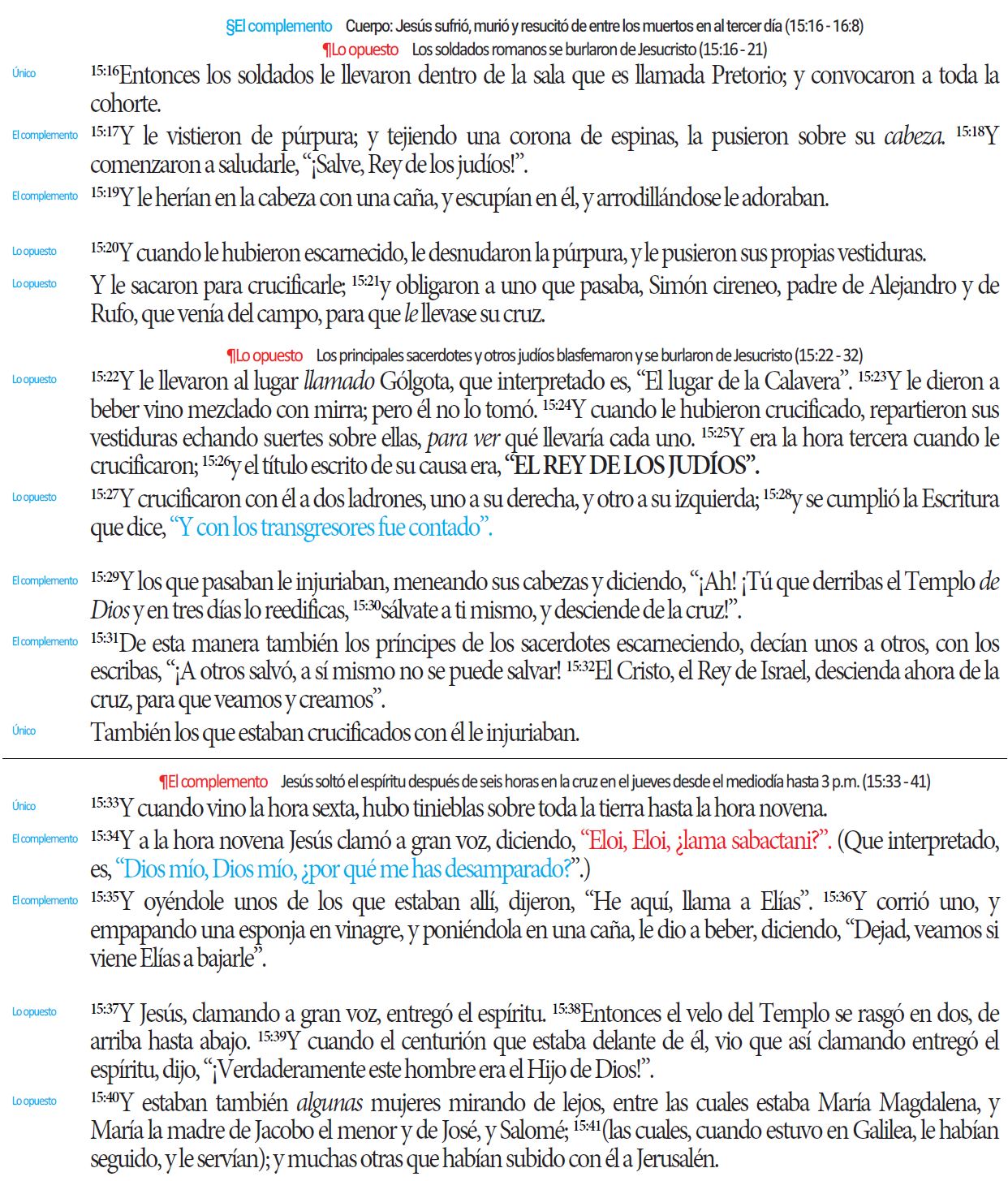
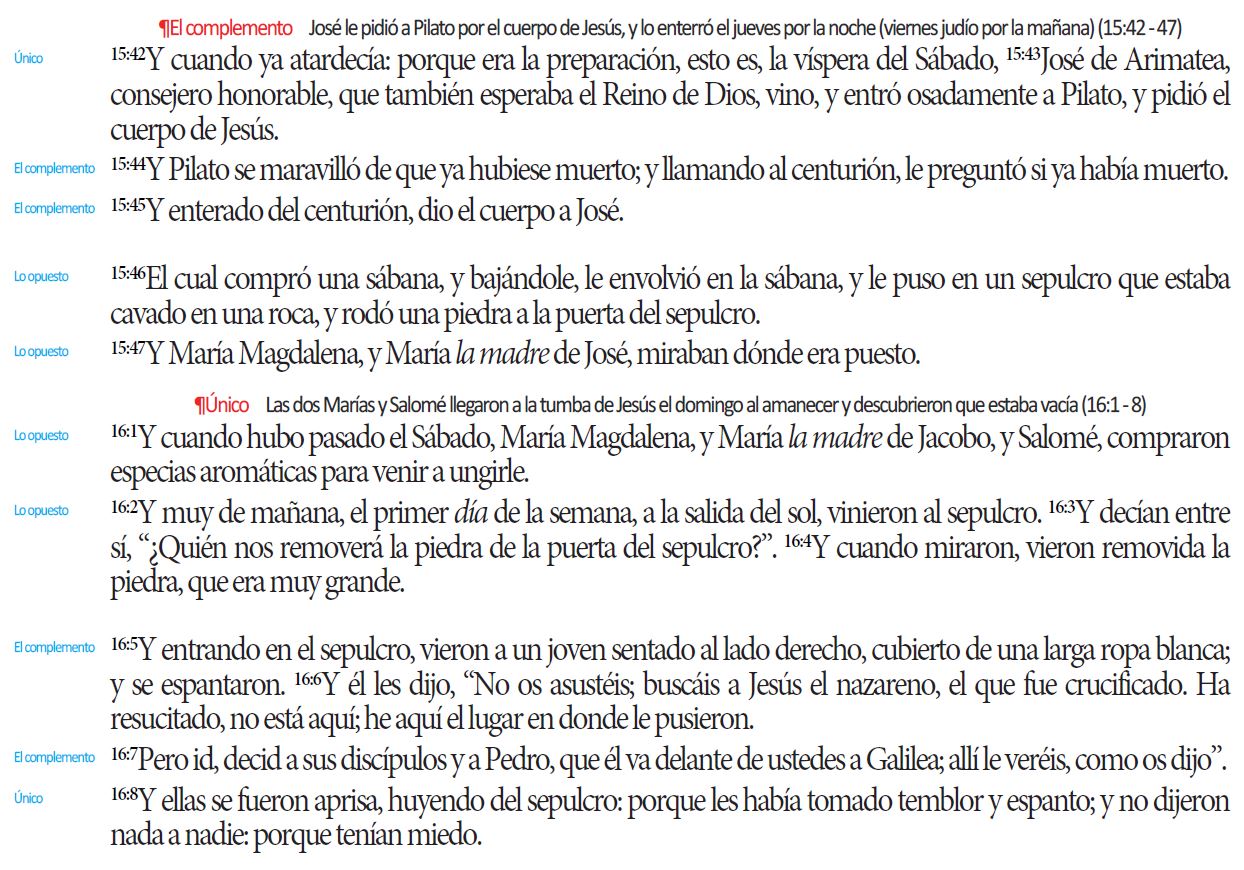
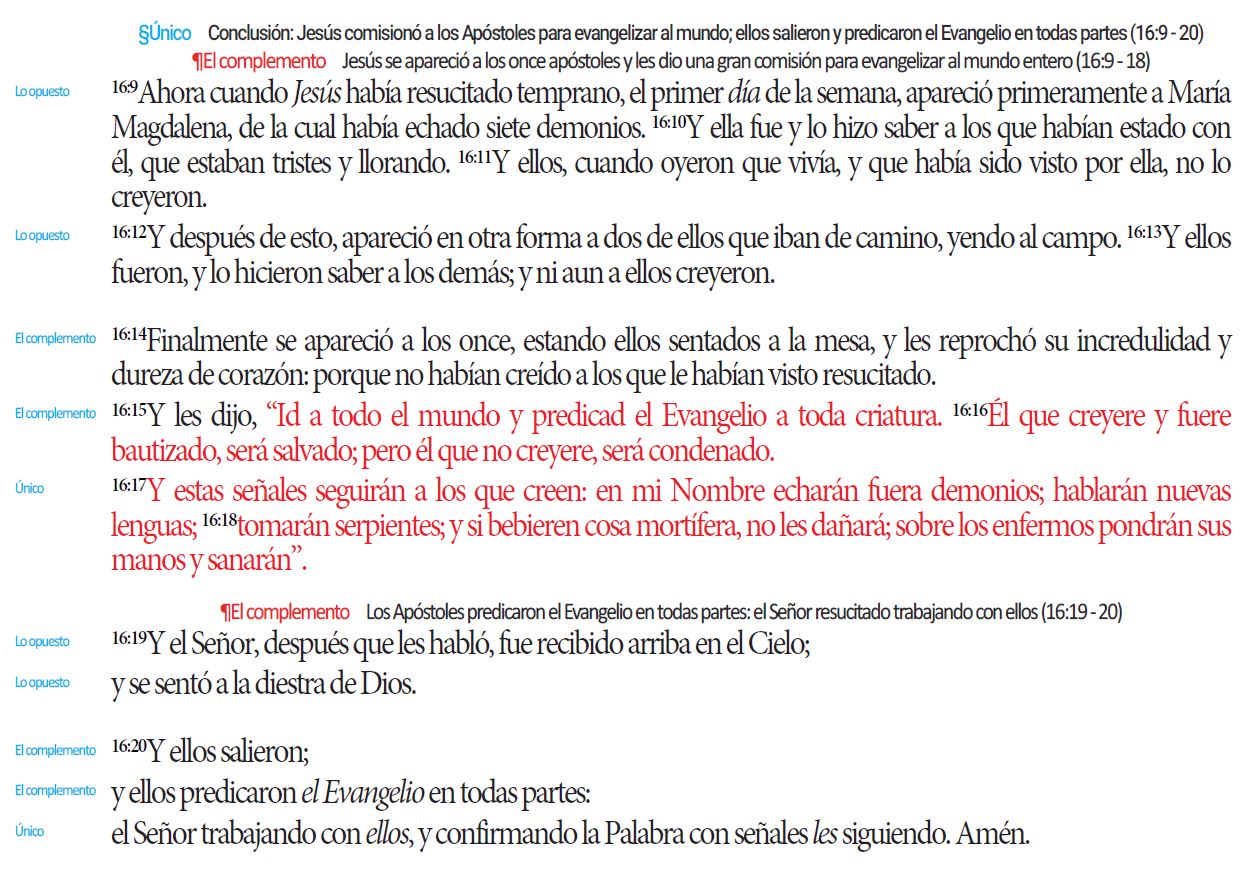
¿No es interesante que toda la porción del texto en cuestión (16:9-20) sea la conclusión de este capítulo? El Capítulo anterior fueron los acontecimientos de la Última Cena hasta el tribunal canguro judío contra las negaciones de Jesús y Pedro. Este Capítulo incluye todos los eventos posteriores, incluida la crucifixión, el entierro y la resurrección de Jesús; por lo que es una unidad (o capítulo) completa de este Libro. El formato de este Capítulo prueba de manera concluyente que el texto omitido por Aleph y B es Escritura genuina, y que Aleph y B fueron editados para eliminar esta importante Escritura. El Texto Recibido incluye este texto, por lo que es el texto verdadero.
Juan 8:1-11 con su contexto
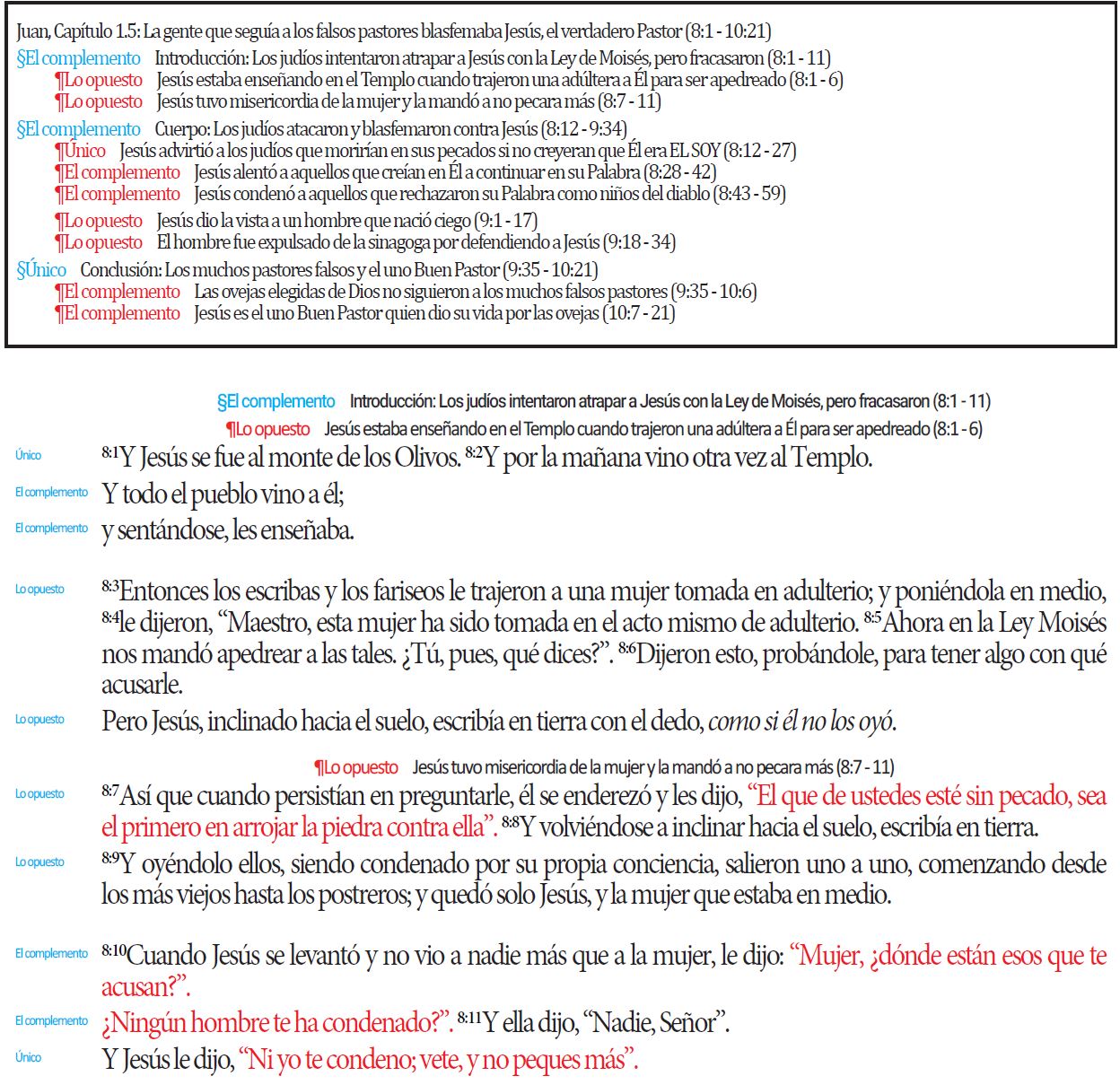
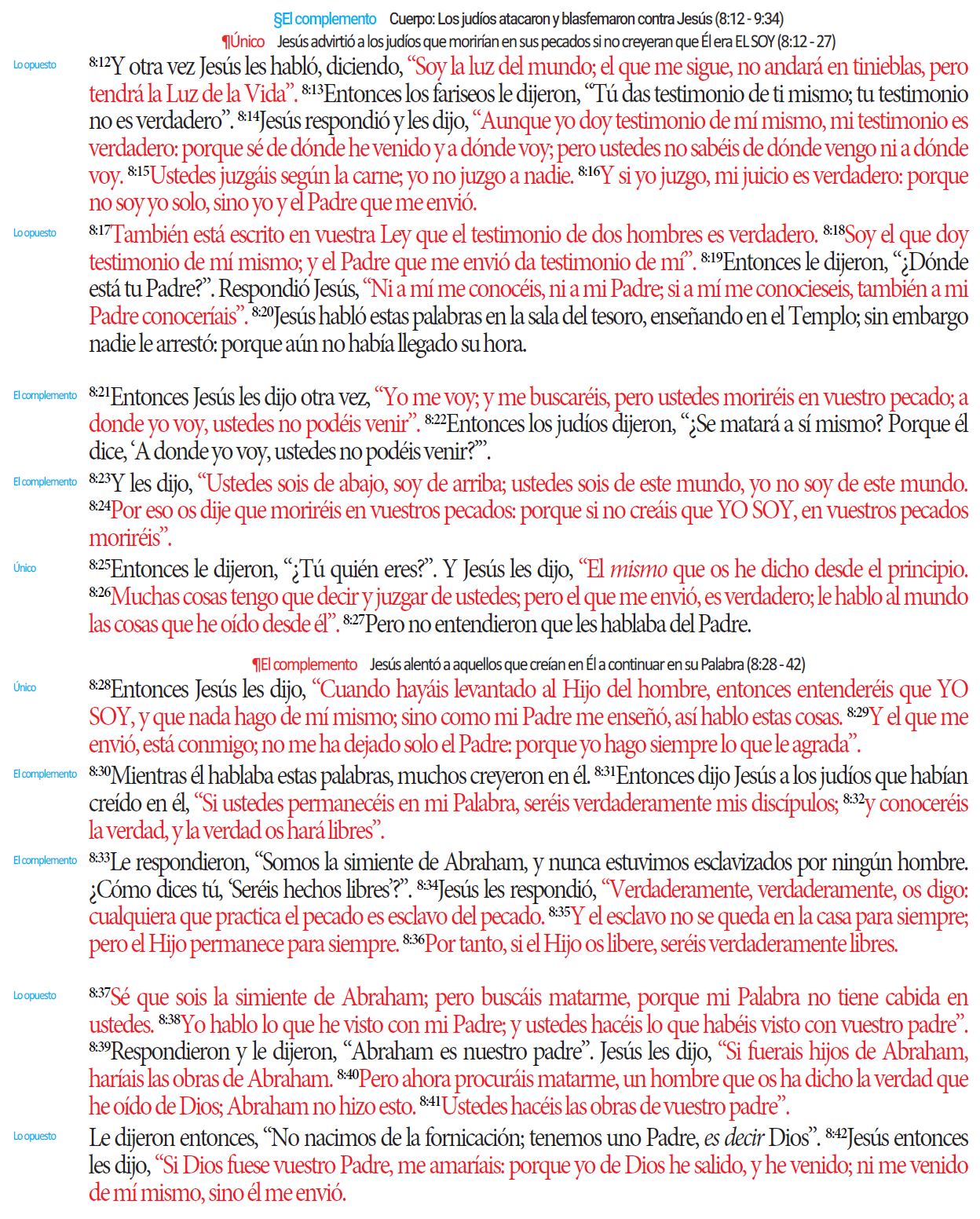
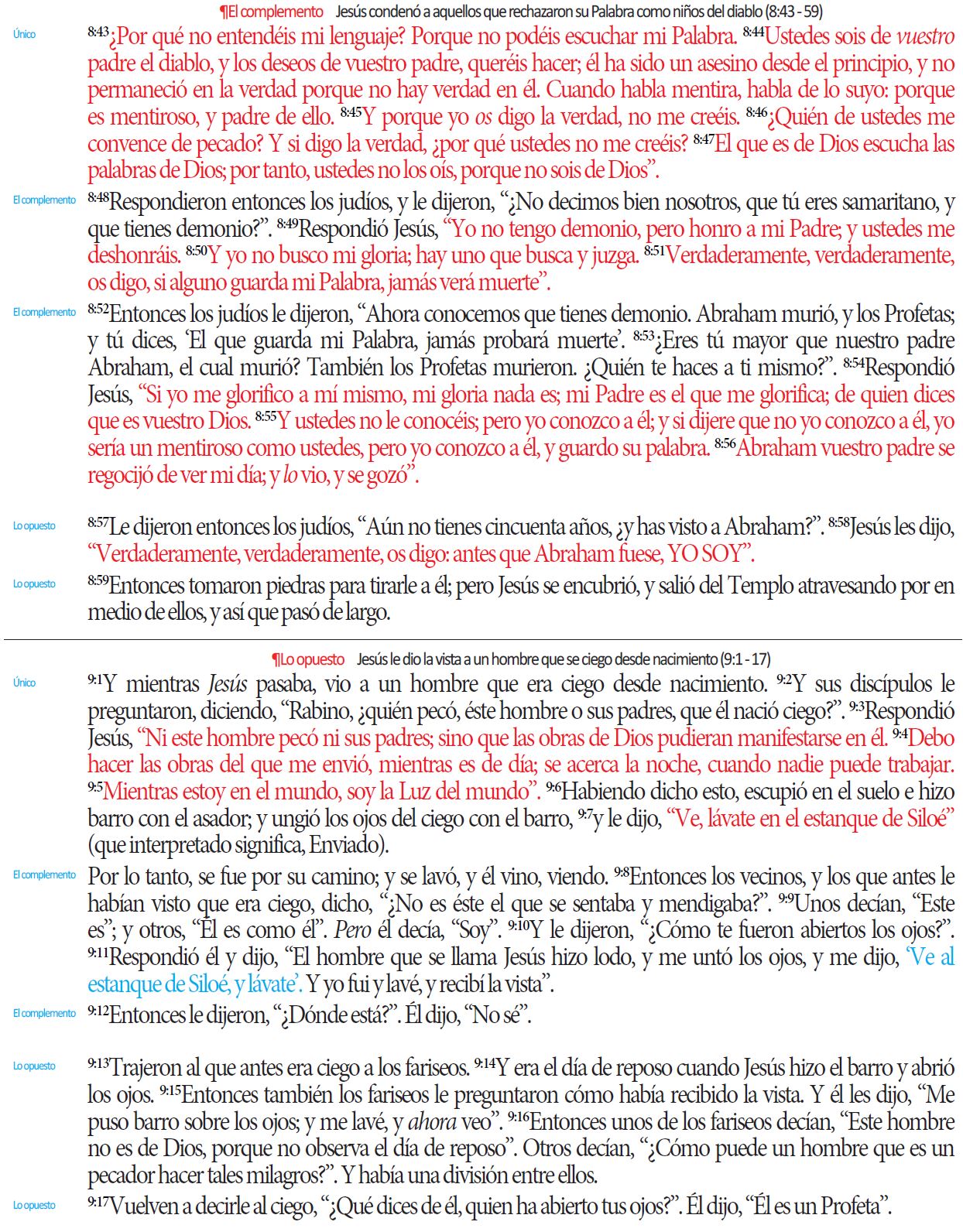
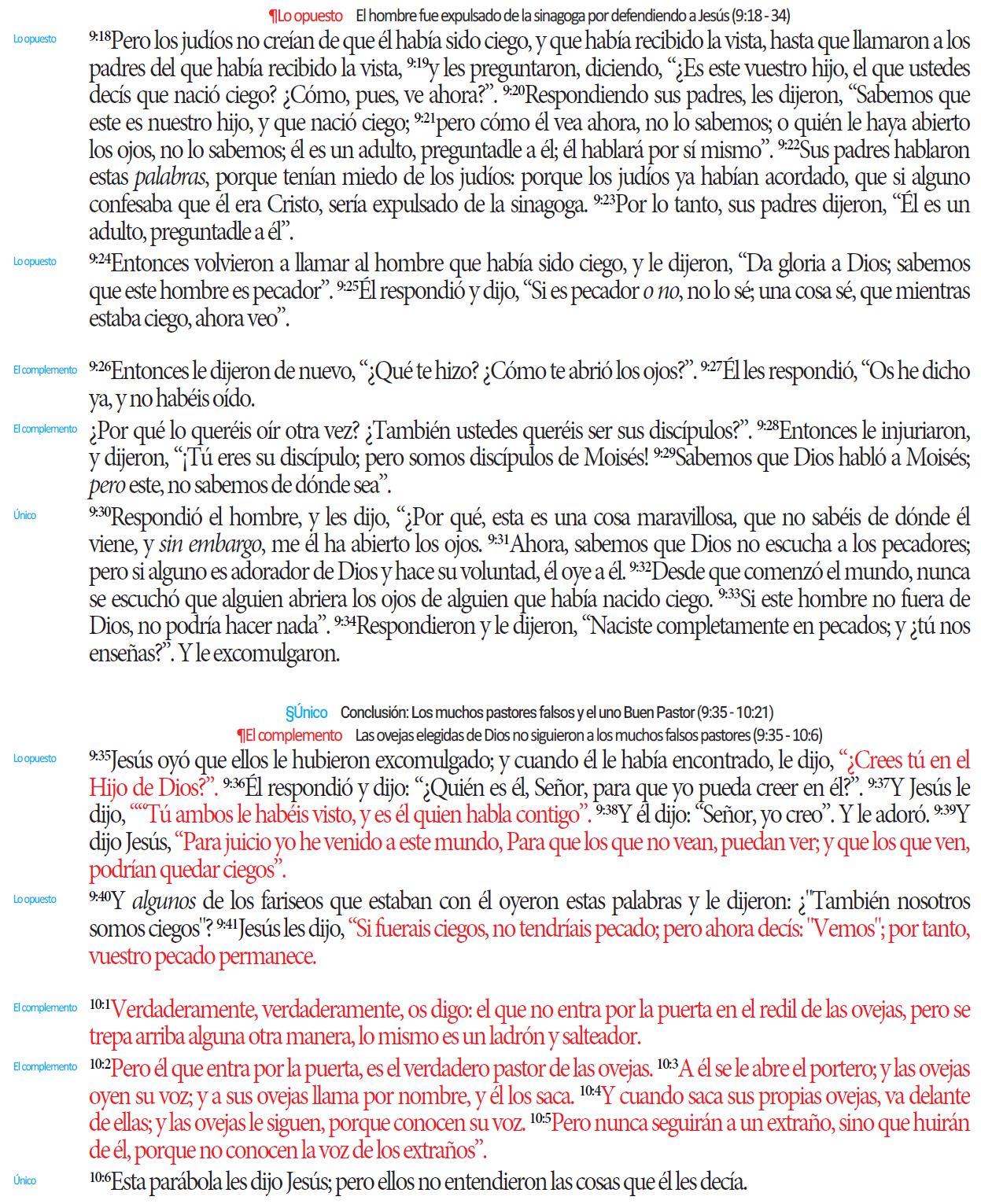
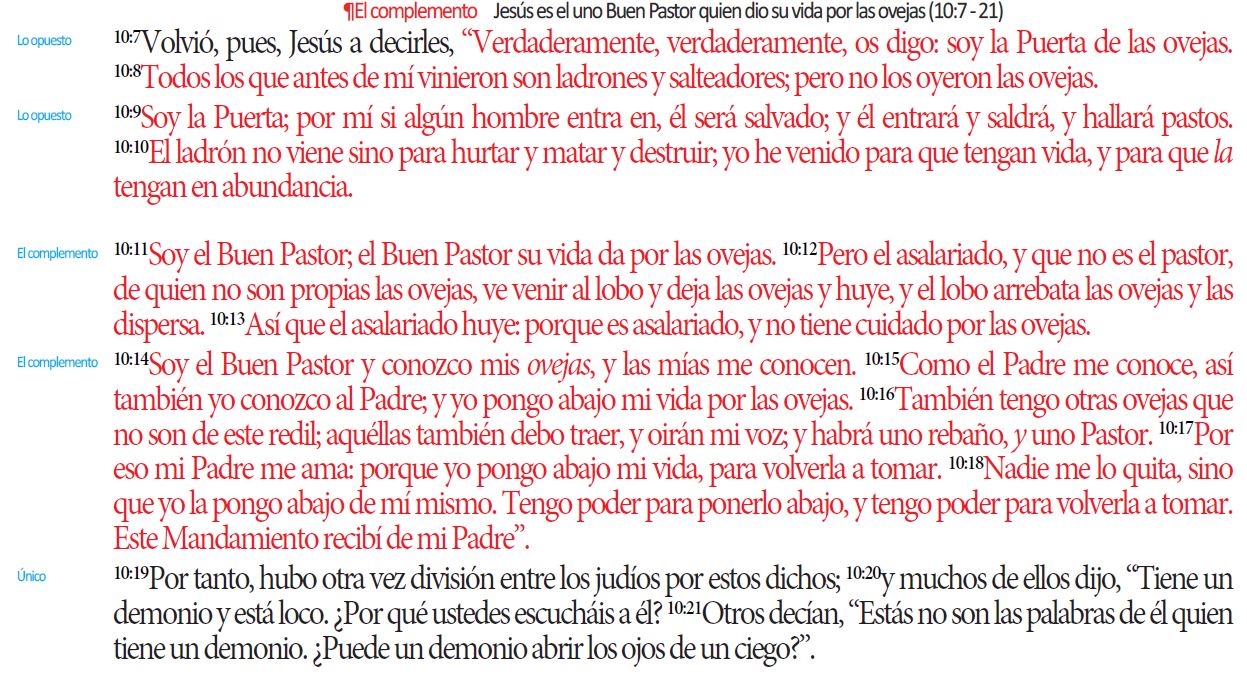
Los acontecimientos de todo el Capítulo sucedieron el mismo día, por lo que el texto del Capítulo 1.5 tiene total integridad y coherencia en sus temas, y constituye un capítulo completo.


Ahora veamos más de cerca del índice de estos dos capítulos. Observe que ambos capítulos en el diseño de la Proporción Áurea de la Biblia tienen el mismo patrón de Introducción-Cuerpo-Conclusión.
Esto no es inusual; de hecho, el diseño de la Proporción Áurea de toda la Biblia se caracteriza por este mismo diseño de Introducción-Cuerpo-Conclusión. Entonces, si un capítulo NO tuviera introducción o una conclusión, ¡eso sería una señal de alerta para mí de que algo anda mal!
Si estos textos se eliminan según Aleph y B, entonces tienes un gran problema: ¿Dónde está la introducción a Juan Capítulo 1.5 y la conclusión a Marcos 2.5?
Por otro lado, dado que los manuscritos Aleph y B omiten Juan 8:1-11 y Marcos 16:9-20, ¡Esta omisión de su parte habla claramente de que alguien (motivado por el diablo) decidió eliminar estos dos textos de las Escrituras desde estos manuscritos!
¡Esto fue algo malvado y creo que Dios juzgó a quien lo hizo con su ira! Nunca toques la Palabra de Dios con la intención de cambiarla o hacerle daño, o recibirás la ira de Dios.
Literalmente, ¡el diseño de la Proporción Áurea de la Biblia no funciona con los manuscritos Aleph y B! Pero si utiliza el Texto recibido (Scrivener), no hay ningún problema. Creo que esto es prueba de que los manuscritos Aleph y B son corruptos e indignos de ser utilizados en cualquier traducción de la Biblia.
Entonces, si Aleph (Sinaiticus) y B (Vaticanus) tienen estos 2 errores importantes en su texto que acabo de demostrar, ¿por qué no es concebible que también contenga muchas otras manipulaciones, alteraciones y/o eliminaciones textuales? De hecho, el manuscrito original del Sinaítico muestra exactamente eso, con evidencia clara de que el texto ha sido eliminado, borrado, cambiado, etc.
Para aquellos de ustedes que se capacitaron para el ministerio en un Instituto Bíblico que afirmaba que Aleph y B son los "mejores", ¿cómo pueden ser ciertas las afirmaciones de sus profesores? Claramente, tus profesores te enseñaron algo que sin duda creían que era cierto, pero no era cierto.
Por eso nunca puedo aceptar los textos del Sinaítico y del Vaticano (Aleph y B) como testigos fiables de los escritos originales de los Apóstoles. Ni ahora ni nunca. Y tú tampoco deberías hacerlo. Obtenga una copia de "La Santa Biblia en los idiomas originales" publicada por la Sociedad Bíblica Trinitaria, si tiene formación formal en griego. Esta edición utiliza el Texto Recibido (Scrivener) y el texto Hebreo Masorético. En todos mis años de trabajo con la Biblia, nunca he visto evidencia alguna que ponga en duda ni un ápice ni un tilde de este texto.
El pueblo de Dios en todas partes debería rechazar a Aleph y B y a todos sus descendientes corruptos: Wescott-Hort, Nestlé-Aland, UBS y varios otros; junto con cualquier versión de la Biblia que se basara en ellos. Amén.